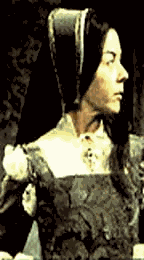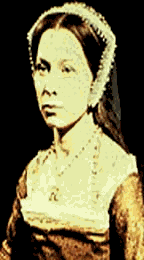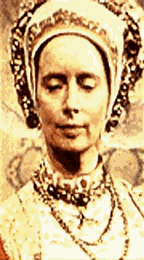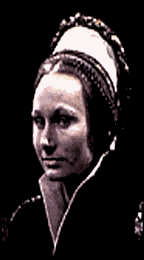HENRY VIII

QI RU AN (RICKY)

QI RU AN (RICKY)
In the legendarily life of Henry VIII, he had six wives. They were Catherine of Aragon (his brother’s widow); Anne Boleyn; Jane Seymour; Anne of Cleves, Katherine Howard and Catherine Parr. But Anne Boleyn and Katherine Howard were beheaded. He had two famous ministers, Thomas Wolsey and Thomas Cromwell. Wolsey fell from Henry's favour and would have been executed had he not died on his way to London. Cromwell (no relation to Oliver Cromwell) was beheaded. In 1534, Henry decided to be the head of the Church of England, and that England should separate itself from Rome. The result of this was that ‘a number prominent churchmen and laymen, including former chancellor Sir Thomas More were executed.’ (http://www.infoplease.com/ce6/people) Henry acquired the loyalty of the large and influential group by distributing among them the property, which he had confiscated from some monasteries that refused to acknowledge England's separation from Rome. In addition, Henry led England to join the war against France and war with Scotland. He curbed the power of France and killed James V of Scotland. He organized the first navy of England. Another achievement of Henry VIII was that Wales was also officially incorporated into England in 1536.
Henry VIII expanded England's government and let England be much more independent, the navy to be established in order to dramatically increase the power of national defence. In his youth, he was educated in the new learning of the Renaissance and developed great skill in music and sports. However lots of people were killed when he practised his policy. He didn't seem to take marriage seriously. His first five wives were either divorced, beheaded or died shortly after child-birth. At the present, people are still interested in his life. In this essay, I will concise introduce all Henry’s life for the reader.
 |
Catherine was the youngest daughter of Isabella of Castile and Ferdinand of Aragon. Because of policy, the marriage of Arthur Prince of Wales to Catherine was decided in 1487. In 1501, Catherine married Arthur in London. However Arthur died in 1502, his brother Henry becoming the successor to the throne. On 11 June 1509, Henry married Catherine in the oratory of the Friary Church. The Queen’s coronation was very sumptuous and ceremonious: ‘two thousand yards of red cloth were needed, and a further 1500 of the superior scarlet cloth. Careful lists were drawn up of those entitled to wear the Queen’s newly devised livery of crimson velvet; while Queen Catherine wore a crown of gold, the border set with six sapphires and pearls, and she carried a sceptre of gold with a dove on top.’(Fraser A. <The six wives of Henry VIII>, 1988, page 50) During that time, most European royal families wanted have a male heir to the throne. Henry was no exception to this. But Catherine was unable to bear a prince. Henry decided to divorce Catharine and diverced her in 1533. |
 |
The second marriage of Henry was on 1 June 1533. Anne Boleyn became queen. At her coronation as Queen Anne, she was nearly six months pregnant. ‘There was a kind of crazy logic to the undivorced King’s second marriage.’ (Fraser A. <The six wives of Henry VIII>, 1988, page 188) Because if the marriage between Henry and Catherine had still been valid, Henry could not have married another female. However, evidently Henry violated the tradition as normal. Anyway, their daughter Elizabeth was born on 7 September 1533. The king still didn't have a male heir. The second pregnancy of Anne resulted in a miscarriage. Henry was very sad after he heard this news: ‘The king comes to Anne ‘bewailing and bemoaning’ the loss of his son, only to have Anne herself break down and refer to his own ‘unkindness’.’ (Fraser A. <The six wives of Henry VIII>, 1988, page 232) Henry believe Anne could not produce a son for him. In 1536, the Queen Anne was convicted of adultery and incest and beheaded. |
 |
Henry’s fancy for Jane Seymour, a daughter of Sir John Seymour, started after the birth of Elizabeth. They made a secret betrothal at Hampton Court on 20 May 1536, the day after the death of Anne Boleyn. ‘On 30 May the marriage between King and Jane took place, quickly and quietly.’ (Fraser A. <The six wives of Henry VIII>, 1988, page 258) Henry seemed genuinely happy with Jane. The first son of Henry was born on 12 October 1536 and he eventually became the next King of England, Edward. Henry was very emotional. At the age of 46, he achieved his dream. ‘Antonio de Guaras heard that the King wept as he took his baby son in his arms.’ (Fraser A. <The six wives of Henry VIII>, 1988, page 277) However, the health of Queen Jane deteriorated after the prince was born. She died before midnight on 24 October, just twelve days after the birth of her son. |
 |
Because of politics and England's quest for a new Queen, Anne of Cleves was married to Henry in 1540. Minister Thomas Cromwell described Anne as a woman who ‘excelleth as far the Duchess as the golden sun excelleth the silver moon.’ and ‘every man praiseth the good virtues and honesty, with shamefastness which appeareth plainly what he had heard from Christopher Mont.’ (Fraser A. <The six wives of Henry VIII>, 1988, page 299) Henry was really looking forward to seeing Anne and prearranged a grand occasion to welcome Anne of Cleves, yet he was very disappointed. As French ambassador, Charles de Marillac wrote: ‘Anne of Cleves looked about thirty (she was in fact twenty-four), tall and thin, ‘of middling beauty, with a determined and resolute countenance.’ The Lady was not as handsome as people affirmed she was, nor as young, but there was a steadiness of purpose in her face to counteract her want of beauty.’ (Fraser A. <The six wives of Henry VIII>, 1988, page 306) They divorced immediately |
 |
Katherine Howard had been a maid-servant of Anne. She married Henry on 28 July 1540 when she was eighteen or nineteen years old. ‘To henry VIII, Katherine Howard was his blushing rose without a thorn. He was besottedly in love with her.’ (Fraser A. <The six wives of Henry VIII>, 1988, page 331) so the badge of Katherine Howard is a crowned rose. But she committed adultert with one of the king's servants, a man called Thomas Culpeper. Because of this, she was executed on 13 February 1542. She had been Queen of England for just over eighteen months, and may still not have reached her twenty-first birthday. |
 |
After five marriages, Henry’s health was very poor and his weight in consequence increased. Under these circumstance, he married Catherine Parr who was the eldest child of Sir Thomas Parr of Kendal and Maud Greene on 12 July 1543. ‘Her rare goodness made every day like Sunday, a thing hitherto unheard of in royal palaces’, (Fraser A. <The six wives of Henry VIII>, 1988, page 377) the description of Queen Catherine Parr from Francis Goldsmith. She has look after the old King until the death of the King, thus she was deserve eulogistic by people. |
Then the policy of Henry was actively to put pressure on the Pope by using Parliament. They passed a handful of strongly anticlerical laws and let Wolsey argue the decision of Rome. But it was a failure because of three bishops who were against the legislation. After this, Henry took a suggestion from a Cambridge theologian, Thomas Cranmer. ‘This was that the universities of Christendom should be canvassed for opinions on the Levitical prohibition and on the Pope’s authority to dispense from it.’ (Rex R. <Henry VIII and the English reformation>, 1988, page 12). The Levitical prohibition referred to the book of Leviticus in the Bible, in which it states that no man shall marry his brother's widow. However it was still a failure. In Rome, the policy always was one of delay. The King was impatient; he nominated Thomas Cranmer as archbishop of Canterbury. ‘Cranmer immediately pronounced Henry’s marriage with Catharine invalid and crowned Anne queen, and the pope excommunicated Henry.’ (http://www.infoplease.com/ce6/people). In 1534, Henry became the head of Church of England. England completely broke with Rome. In this event, a number of opponents of the decision were executed.
The foreign policy of Henry VIII was very successful: ‘In 1512 Henry joined Pope Julius II, Ferdinand of Spain and the Venetians in forming the "Holy League" against the King of France. There was a victory at Guinegate outside Therouanne.’ (http://www.newadvent.crg/cathen/07222a.htm) In 1513, he has defeated the Scotch at Flodden. After the League broken up due to the selfish policy of Ferdinand, Henry made peace with France. So the power in Europe was been balanced. In 1542 the war with Scotland had begun again, resulting in victory for Henry again at Solway Moss and the death of James V, the Scottish king. During the second war against France in 1543, Henry joined Charles and took Boulogne. The war finished in 1546 the year before Henry died. At the time of Henry's death, England had become a powerful country in Europe.
 |
However powerful he was, Henry was still a human being. In the last years of his life, Henry looked very fat and weak. He died by pulmonary embolism on the 31 January 1547. The last message from him was ‘if he had any, it should be Dr Cranmer, but I will first take a little sleep, and then, as I feel myself, I will advise upon the matter.’ (Weir A. <Henry VIII (King and Court)>, 1988, page 502) But, when Cranmer arrived on 28 January, Henry could no longer speak. Henry’s body was embalmed and encased in lead, and laid in state in the presence chamber at Whitehall, surrounded by burning tapers. After a few days, it was moved into the chapel.’ (Weir A. <Henry VIII (King and Court)>, 1988, page 503) On 14 February, Henry’s body was moved from Whitehall to Windsor. |
The funeral of Henry VIII was magnificent, ‘The vast coffin, covered with palls of blue velvet and a cloth of gold, lay on a chariot drawn by black-caparisoned horses, who drew it along roads that had been swept and even widened for the occasion. On top of the coffin was a wax effigy of the King, carved by Nicholas Bellin and clad in crimson velvet trimmed with miniver; on its head was a crown atop ‘a night cap of black satin, set full of precious stones’. It wore jewelled bracelets and velvet gloves adorned with rings.’ (Weir A. <Henry VIII (King and Court)>, 1988, page 503).
Rex R. <Henry VIII and the English reformation>, 1988, St John’s College, Cambridge
Weir A. <Henry VIII (King and Court)>, 1988, lives and works in Surrey